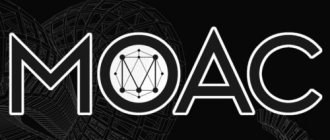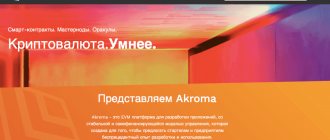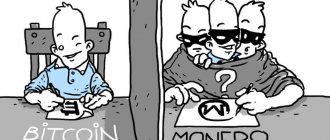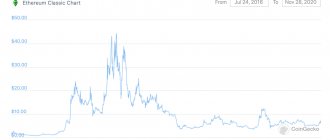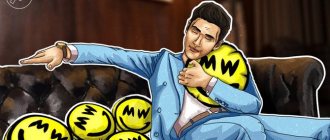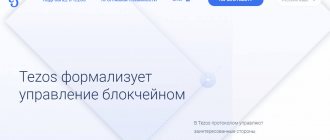A newly launched blockchain network originating from China is poised to surpass Ethereum and EOS in speed, efficiency and functionality.
When Ethereum emerged in 2015, it created a wave of innovation. The introduction of decentralized applications (dApps) and smart contracts into ecosystems has opened up new opportunities for decentralization, causing the surge in initial coin offerings (ICOs) that we have seen over the last two years. Ethereum received the title of second generation cryptocurrency.
Three years later, we have the third generation of the blockchain system - MOAC, which is also called the “mother of all blockchains”. With its layered architecture that allows MicroChains (sharding) transactions and cross-chains, it has the potential to push Ethereum away from the forefront.
What is MOAC
MOAC is not just another cryptocurrency with which the developers decided to earn money for an expensive car. As the main page of the official website of the project immediately explains, behind the word lies a multi-layer blockchain architecture for commercial applications.
It sounds complicated, but it’s really easy to figure out. To do this, look at the image of the blockchain design.
The main feature of MOAC is the presence of a “mother” link called MotherChain and additional MicroChain. Thanks to the use of sharding technology, microchains act as child blockchains within the global main blockchain. Microchains are responsible for managing smart contracts and conducting large volumes of transactions.
This makes sense: the multi-layer blockchain architecture speeds up the overall speed of transactions by 100 times compared to existing blockchain platforms. In addition, microchains significantly reduce the cost of smart contracts and allow developers to quickly test various applications and service ideas.
Another feature of MOAC is the interaction of microchains with other blockchains. Thanks to this, users and decentralized applications can easily migrate between different platforms. Isn't it a miracle?
Road map
The project roadmap is scheduled until June 2022. The following developments and implementations are planned by December 2018:
- launch of the next generation P2P system;
- payment system at full capacity;
- high-performance online storage;
- development of a chip for EVM equipment.
It is planned that by 2022, 100+ decentralized applications will be launched on the MOAC platform.
Project prospects
Users appreciated the developers' ideas. The MOAC team raised almost $7 million through the ICO. There is money for work.
In December, developers will release a new generation P2P sharding system, a full-fledged payment system and other important updates.
We cannot help but note that the team is actively present on social networks. This is not about simple announcements on Twitter, but real communication with users. In addition, MOAC has a YouTube channel where they teach developers. And a bunch of other events. If Ethereum had this, the world would have been taken over by smart contracts long ago.
History of creation
MOAC is a project that originated in Silicon Valley and is headquartered in Pola Alto. This place has become the birthplace of many prominent American Internet companies. Most programmers consider this place magical and magical; even Google and Microsoft were born in its “garages”.
We live in a time when the fields of science and technology are experiencing very rapid growth, and this entails the development of modern approaches to solving human needs. Mother of All Chains (MOAC) helps to combine all the advances in blockchain that were implemented in the first and second generations of crypto coins.
The MOAC project held its ICO from June 20 to July 5, 2017, as a result of which the first part of coins was sold - 56,483,386 MOAC. At that time, this amount was equivalent to 24,995 ETH or $7,000,000. The rest will be available for mining.
MOAC price and its records
MOAC is ranked 38th in the global CoinMarketCap ranking. The cost of the coin is $3.90, capitalization is 243 million. Over the past 24 hours, the equivalent of $244 thousand of cryptocurrency has passed through exchanges. There are 62 million MOAC in circulation, and there will be almost 2.5 times more - 151,205,864 coins.
The record price was recorded at the end of January. Then the price crossed the threshold of $18.
Where to buy MOAC
There are few options. The main exchange listing MOAC is CoinBene. Almost 99 percent of all transactions with the coin go through it. The little-known Bit-Z took the rest.
Here are some more options.
- https://www.coinw.me/
- https://www.manbiwang.com
- https://www.hb.top
- https://www.ubitvip.com/
- https://www.coinoah.com
- https://www.winmaxcoin.com/
- https://www.rfinex.com
- https://www.weidex.vip
Listing on exchanges
Currently, trading is carried out only on two platforms - CoinBene and Bit-Z.
The bulk of trading was recorded on CoinBene, trading against the USDT pair, the total volume reaches 92%. On Bit-Z, trading is carried out in relation to ETH, the total volume is no more than 8%.
The MOAC blockchain is located at explorer.moac.io.
go
Profitability of mining MOAC
By tradition, we take one farm for 250 MH/s. With such a hashrate, you can hope for the following numbers.
$7 a day isn't that bad. It is better to go solo with at least three similar farms. They will give us about $640 a month.
Technical part of the ecosystem
For successful work, a hybrid structural model of consensus algorithms will be used, including PoW, used on the main (mother) blockchain, and the PoS protocol, used on the adjacent (additional) blockchain.
The unique features of the structure include cross-platform, which allows all decentralized working software based on MOAC to successfully interact with other crypto projects, including EOS, project programs based on Ethereum, as well as Bitcoin.
MOAC development engineers, while conducting research, identified one pattern that many smart events slowed down in situations with non-critical functional parameters and, ultimately, all smart programs could require an updated and innovative logic design to solve the difficulties encountered.
MicroChain is capable of increasing the overall throughput of transactions per second, up to 100 thousand operations, and the improved shell of the ecosystem architecture can increase the intellectual degree of throughput of smart structures up to 10 thousand TPS.
The multi-layer structure of the blockchain will allow users to leave cheap groups of equipment, for example, mobile devices, which in turn increases the principle of scalability within the network.
Excellent experimental results were achieved when working with networks based on Ethereum, as well as EOS.
Many operations, for example, transferring the current balance of an operating transaction, do not require certain computing power.
However, for a very sufficient number of groups of smart contracts, high computational parameters are required to carry out fast transactions.
This is exactly the problem that MOAC solves, namely, all necessary transactions will be processed in the lower layer, that is, linked to PoW (Proof-of-Work), this important role will be performed by the MotherChain blockchain.
And most of the complex tasks of smart contracts are transferred to processing in the upper layer using the PoS algorithm, the role of which will belong to MicroChains.
Creating a combined scheme will not limit the TPS as well as the required levels for performance given the current ecosystem-level design.
go
Where to mine MOAC
We recommend mining the coin on the 2Miners mining pool. We have stable payments, more than 9,000 miners online and a clear interface.
Coins are available in PPLNS and SOLO. MOAC is no exception. Here are the general pool statistics.
But here are the payout figures specifically for MOAC.
How to start mining
To get started, download the latest version of PhoenixMiner or Claymore's Dual Ethereum GPU Miner from this link. The archive password is 2miners.
After that, find the moac-pool.bat file in the Ethash folder and edit it. So the profit will go to you.
- We write the wallet address in the file instead of YOUR_ADDRESS. Example 0x0073Cf1B9230cF3EE8Cab1971B8DbeF21eA7B595;
- change RIG_ID to the desired name of the rig. We write no more than 32 characters. We use only letters of the Latin alphabet, numbers and symbols “_” and “-”.
An example of a correctly completed .bat file for PhoenixMiner.
setx GPU_FORCE_64BIT_PTR 0 setx GPU_MAX_HEAP_SIZE 100 setx GPU_USE_SYNC_OBJECTS 1 setx GPU_MAX_ALLOC_PERCENT 100 setx GPU_SINGLE_ALLOC_PERCENT 100 PhoenixMiner.exe -coin moac -pool moac.2miners.com:5050 -wal YOUR_ADDRESS.RIG_ID pause
And here are the settings for Claymore's Dual Ethereum GPU Miner.
setx GPU_FORCE_64BIT_PTR 0 setx GPU_MAX_HEAP_SIZE 100 setx GPU_USE_SYNC_OBJECTS 1 setx GPU_MAX_ALLOC_PERCENT 100 setx GPU_SINGLE_ALLOC_PERCENT 100 EthDcrMiner64.exe -epool moac.2miners.com:5050 -allcoins etc -allpools 0 -eworker RIG_ID -ewal YOUR_ADDRESS -epsw x pause
We launch the bat file and see the following picture.
How the platform works
The platform is built on a multi-blockchain structure, which allows it to achieve transaction speeds hundreds of times higher than in the popular Ethereum network. The MOAC architecture includes the following components:
- Mother Blockchain;
- Additional blockchain (MicroChainsTM);
- Platform for creating and operating smart contracts;
- API constructors.
In accordance with the statements of the developers, this architecture of the created platform provides it with almost unlimited possibilities for scalability. Thanks to this, the main problems will be solved and the requirements of blockchain network users will be satisfied. Using the additional functionality of the architecture, decentralized application developers will be able to work with the platform and create their own solutions using the API.
